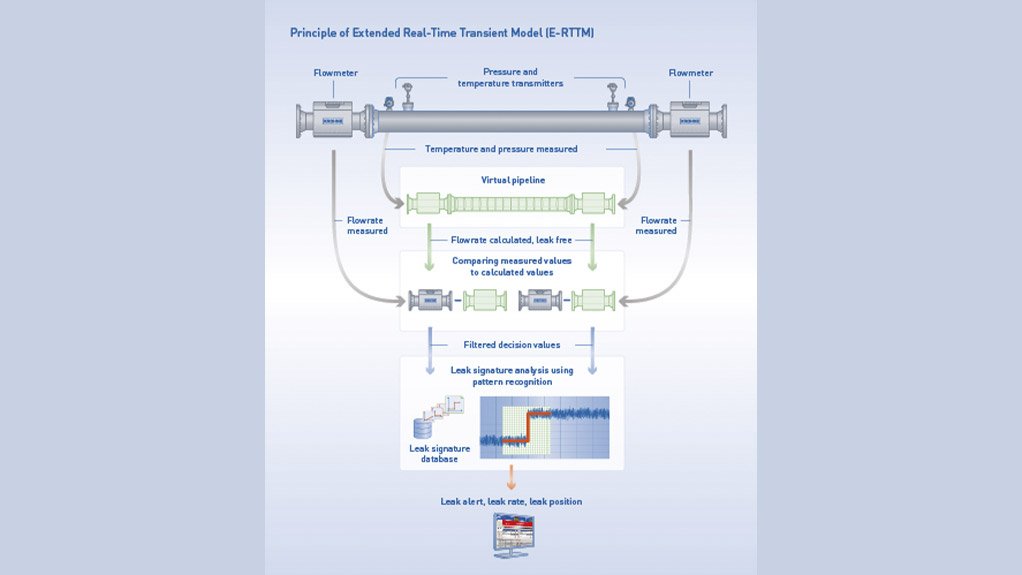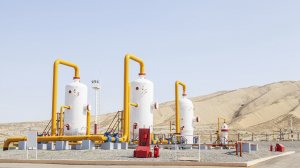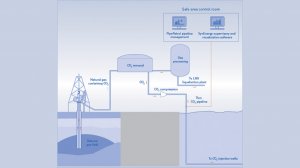Leak Detection for Energy Transition
This article has been supplied as a media statement and is not written by Creamer Media. It may be available only for a limited time on this website.
With a shift from fossil-based systems to renewable energy sources also comes a shift for the transportation. This is also true for pipeline leak detection systems.
Some pipelines transport 100% hydrogen while others a blend with natural gas. CO2 can be transported as gas, liquid or in supercritical state. As a result the leak detection system needs to be able to work with these different mixtures and phases.
For classical leak detection system this is a problem. Negative Pressure Wave leak detection systems are affected due to damping in gas. Classical statistical systems are affected due to compressibility and linepack changes. This leads to long detection times or high thresholds. The systems will react with a loss of sensitivity or in the worst case with false alarms.
This is a typical application for RTTM based systems, which try to consider all the different products and pipeline properties in its calculations. However, if the fluid cannot be accurately modelled by the system this leads to false results.
In the Extended Real-Time Transient Model technology (E-RTTM) these disadvantages are compensated by Signature Analysis. Signature Analysis makes the system less sensitive against inaccuracies in RTTM calculations. Thus challenging pipeline conditions, product parameters or mixtures, e.g. hydrogen blends, leading to inaccuracies become less important. In PipePatrol the RTTM is used for filtering purposes and leaks are detected by pattern recognition techniques.
Principle of E-RTTM
KROHNE, a manufacturer of measuring technology and established supplier of systems to the pipeline industry, with more than 35 years of experience in leak detection and localization systems, developed E‑RTTM.
E-RTTM stands for Extended-Real Time Transient Model, which extends a feature generation module with leak signature analysis using leak pattern detection.
An E-RTTM leak detection system creates a virtual image of a pipeline and uses standard process instrumentation for flow, temperature and pressure measurements. The hydraulic profiles along the virtual pipeline are calculated from the measured pressure and temperature values. The model compares the calculated flow values with the actual values from the flowmeters. If the model detects a discrepancy, the leak signature analysis module determines whether it was caused by changing pipeline operation, an instrument error or a leak.
Leak Detection System for Hydrogen
The leak detection system was installed on a Power-to-Gas project which was the world’s first demonstration plant for storing wind energy in the natural gas grid.
As the leading leak detection system provider in Germany, KROHNE had been recommended by an independent third party authority, to be the supplier for the leak detection system.
The E-RTTM technology was selected due to its ability to measure a product even in small leak quantities. This was the first Power-to-Gas Application equipped with a PipePatrol leak detection system in 2013. Since then, PipePatrol has been installed on more hydrogen pipelines.
Leak Detection System for Carbon Capture
Natural gas from the Gorgon gas field contains around 14% naturally occurring CO2. Prior to converting the natural gas to LNG, the CO2 is removed. To minimize the environmental footprint, the separated CO2 is injected in a storage formation.
A 7 km long pipeline transports the CO2 from the LNG liquefaction plant to the CO2 injection wells. The requirement was to provide a pipeline leak detection system that provides timely and accurate leak information for the pipeline-segments between the LNG plant and drill-centers.
KROHNE provided the E-RTTM based leak detection system. The project involved unique conditions, such as the properties of CO2 in supercritical phase and flow measurements done by orifice plates with limited rangeability.
Summary
KROHNE, a manufacturer of measuring technology and established supplier of solutions to the pipeline industry, with over 450 installations and more than 35 years of experience in pipeline leak detection and localization systems provides extended PipePatrol E-RTTM, a leading technology for monitoring of pipelines.
Through the possibility to adapt the model to the different requirements of applications the overall result is better. Due to the Signature Analysis the system is less sensitive against inaccuracies in the process and modelling of the fluid.
The technology is industrial proven for liquid, gas and slurry applications. Smallest detectable leak rates are typically 0.5% and below. Leak detection time in seconds, confirmation within minutes.
It has an exceptionally low false alarm rate due to optimization. Leak localization is best-in-class.
Comments
Press Office
Announcements
What's On
Subscribe to improve your user experience...
Option 1 (equivalent of R125 a month):
Receive a weekly copy of Creamer Media's Engineering News & Mining Weekly magazine
(print copy for those in South Africa and e-magazine for those outside of South Africa)
Receive daily email newsletters
Access to full search results
Access archive of magazine back copies
Access to Projects in Progress
Access to ONE Research Report of your choice in PDF format
Option 2 (equivalent of R375 a month):
All benefits from Option 1
PLUS
Access to Creamer Media's Research Channel Africa for ALL Research Reports, in PDF format, on various industrial and mining sectors
including Electricity; Water; Energy Transition; Hydrogen; Roads, Rail and Ports; Coal; Gold; Platinum; Battery Metals; etc.
Already a subscriber?
Forgotten your password?
Receive weekly copy of Creamer Media's Engineering News & Mining Weekly magazine (print copy for those in South Africa and e-magazine for those outside of South Africa)
➕
Recieve daily email newsletters
➕
Access to full search results
➕
Access archive of magazine back copies
➕
Access to Projects in Progress
➕
Access to ONE Research Report of your choice in PDF format
RESEARCH CHANNEL AFRICA
R4500 (equivalent of R375 a month)
SUBSCRIBEAll benefits from Option 1
➕
Access to Creamer Media's Research Channel Africa for ALL Research Reports on various industrial and mining sectors, in PDF format, including on:
Electricity
➕
Water
➕
Energy Transition
➕
Hydrogen
➕
Roads, Rail and Ports
➕
Coal
➕
Gold
➕
Platinum
➕
Battery Metals
➕
etc.
Receive all benefits from Option 1 or Option 2 delivered to numerous people at your company
➕
Multiple User names and Passwords for simultaneous log-ins
➕
Intranet integration access to all in your organisation



























